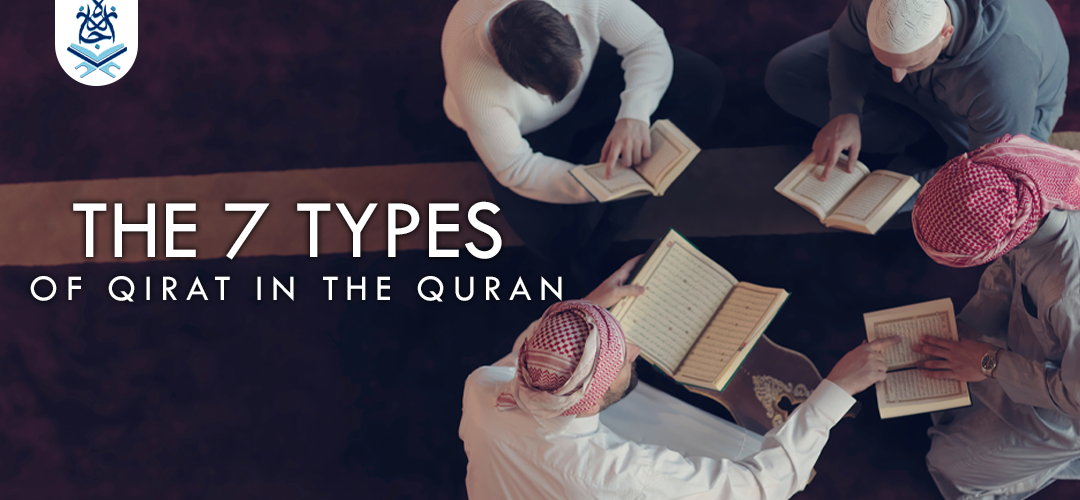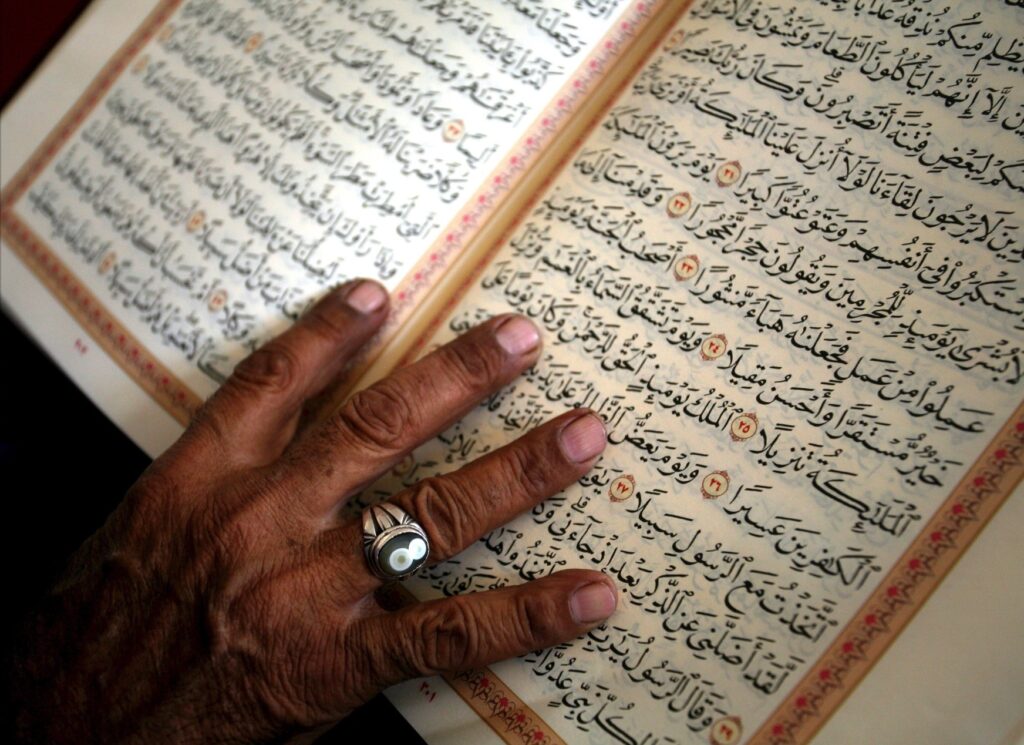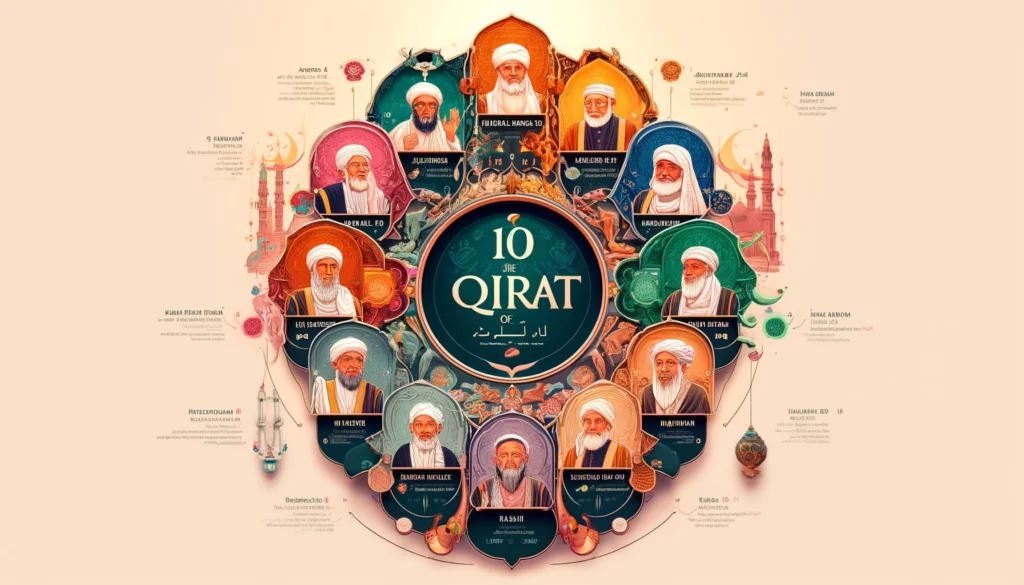Blog
The 7 Types of Qirat in the Quran

Types of qirat | Numerous individuals need to know the meaning and sorts of Qirat. As a presentation, It could be a characteristic marvel that dialects talked about around the world have shifted conduct and dialects within them. English, for occurrence, is the foremost broadly spoken dialect all over the globe and has diverse sorts of elocutions based on the locales from which speakers belong.
The Arabic dialect that Allah SWT has chosen as the standard-bearer of Islam to spread His message and communicator of the Quran is comparable to other dialects, having distinctive persuasive varieties happening from the changes among highlights, tones, and topographical conditions of the Middle easterner. Such changes within the Quran recitation are called Qirat. To memorize what Qirat precisely is and the diverse sorts of Qirat of the Quran, proceed perusing this post.
What is a Qirat in Islam
Qirat (pl. of Qirah) in Islam alludes to the different ways of presenting the Sacred Quran. These are diverse lexical, phonetic, phonetic, morphological, and grammatical conduct allowed in presenting the Quran. Each Qirah has its claim to certain rules of recitation and varieties in words and letters. Qirat also alludes to the Islamic department that bargains with these recitation conduct. Hence, Qirat is the verbalization of the Quran, and the Quran is protected in Qirat.
Meaning of Qirat
The word Qirat (قراءات) came from the Arabic dialect and was inferred from the term Qirah (قراءة), meaning ‘reading’. This term has been wrangled about by different Quranic researchers with completely different definitions, where one portrays it as information articulating the verses of the Quran. It is named after the word Qari – one who recounts the Heavenly Quran. Qirat meaning in Arabic is the perusing or recitation of something. Qirat’s meaning in English is similar – the activity of perusing a bit of composing out loud from memory.
Types of Qirat in the Quran
The sorts of Qira’t are the strategies in which the eminent specialist chain holders recount the Quran. All Qira’t got their title from the popular Rawis, who described it with a verified and set up the chain. Diverse sorts of Qira’t demonstrate that this Sacred Book could be disclosed from Allah (SWT) and protected over centuries, as all these Qira’t have been recounted with a coordinated and true chain of realtors back to Allah’s Witness (PBUH).
The names of the 7 types of Qira’t:

The taking after seven sorts of Qira’t drop beneath the Mutawatir category – a transmission with autonomous chains of specialists so broad as to kill the plausibility of any botch and on which there’s common assent. And these Qira’t were chosen by the celebrated Quranic researcher within the field of Qira’t named Abu Bakr ibn Mujahid.
- Qira’t Naafi’ Al-Madani (Madinah) Imam Malik (RA) and Imam Ahmad ibn Hanbal (RA) recounted the Heavenly Quran in this way for the most part. Qaloon and Warsh are the two Qaris who protected this recitation.
- Qiraat Ibn Katheer Al-Makki (Makkah) Qunbul, Al-Buzzi, and Imam Shafi presented the Quran in this way. Al-Buzzi and Qunbul are the two Qaris who protected this recitation.
- Qiraat Abu Amr al-Basri (Basra) Ad-Doori and As-Soosi are the two Qaris who protected this perusing way of the Sacred Quran.
- Qira’t Ibn Aamir ash-Shami (Syria) Ibn Dhakwan and Hisham are the two Qaris who recounted and protected this recitation of the Quran.
- Qira’t Asim Al-Kufi (Kufa) Imam Abu Hanifa (RA) and Imam Ahmad ibn Hanbal (RA) frequently presented the Quran in this way. The two Qaris who protected this recitation way are Hafs and Shuba.
- Qira’t Hamzah al-Kufi (Kufa) The two popular Qaris who protected this perusing way are Khallad and Khalaf (who too has his claim Qira’t, i.e.,
- Qirat Khalaf al-Bazzar). Qirat Al-Kisaa’i (Kufa) Al-Layth and Ad-Doori are the two Qaris who protected this Quran recitation.
In add up to, there are ten Qirat, but as it were seven of them are as a rule considered. The reason is at the beginning of the Muslim success, the seven noticeable researchers and their understudies remained in a particular locale, whereas the other three moved to diverse ranges over the world until a researcher named Ibn el Jazerry traveled around the world and found other three recitation conduct. In any case, the other three sorts of Qirat are not included most of the time.
7 Dialects of the Quran
After learning how numerous Qirat of the Quran we have, individuals ought to center on its distinctive tongues as well. Ordinarily, individuals befuddle Qirat with Ahruf (the terminologies of the Quran). The Sacred Quran was uncovered to Allah’s Flag-bearer (PBUH) in seven Ahruf (plural of Harf), interpreted as ways, tongues, shapes, modes, and styles. On the other hand, Qirat alludes to the strategy of articulation utilized within the Quran recitations and is diverse from the 7 styles of Quran recitation (Ahruf). It is accepted that these seven lingos have a place in the seven tribes, which incorporate Quraysh, Hudhayl, Tameem, Hawaazin, Thaqeef, Kinaanah, and Yemen.
The shrewdness behind this was to form Quran recitation and memorization less demanding for the nearby tribes who unexpectedly talk Arabic. These seven lingos were decreased to one, that of the Quraysh, amid the run the show of the third caliph Uthman ibn Affan (RA) since variation styles of readings had the potential to cause divisions among Muslim ummah.
All of the seven modes of recitation are based on this tongue. The premise to the truth that there are seven diverse Ahruf in which the Sacred Quran was uncovered to Prophet Muhammad (PBUH) can be followed back to different hadiths, a few of which are as follows:
Ibn Masud detailed that Allah’s Messenger (PBUH) said:
“The Qur’an was sent down in seven modes. Every verse in it has an external and an internal meaning, and every interdiction has a source of reference.”
[Mishkat al-Masabih]
And in another hadith, Ibn Abbas detailed that the Flag-bearer of Allah (PBUH) said:
“Gabriel taught me to recite in one mode, and when I replied to him and kept asking him to give me more, he did so till he reached seven modes.” Ibn Shihab said he had heard that those seven modes are essentially one, not differing about what is permitted and what is prohibited.
[Sahih Muslim]
Difference between Tajweed and Qirat
Numerous times, individuals confound Qirat with tajweed as well. Qirat is the different conventional strategy of recitation, while tajweed alludes to a set of rules for the right articulation and recitation of the Quran.
Each one of the Qirat has its possess tajweed, and the Quran was uncovered and instructed to Prophet Muhammad (PBUH) with tajweed, which was afterward instructed to his companions RAA by him. The significance of tajweed can be incredibly watched within the taking after verse:
“Those to whom We have given the Book read it as it ought to be read. They [are the ones who] believe in it. And whoever disbelieves in it – it is they who are the losers.”
(Al-Baqarah:121)
The 10 Qiraat: Diverse Recitations Preserving the Quran’s Richness

Exploring the Types of Qiraat in the Quran
The 10 Qiraat are the various canonical recitations of the Quran, each representing a unique method of pronunciation and articulation used by different scholars and Qaris (reciters). These recitations were transmitted through authentic chains of narrators and preserved by specific Qaris. Here’s a detailed overview of the 10 Qiraat:
- Qira’at Naafi’ Al-Madani (Madinah):
- Qaris: Qaloon and Warsh.
- Notable Scholars: Imam Malik (RA) and Imam Ahmad ibn Hanbal (RA).
- Characteristics: Known for its ease and simplicity, this recitation is widely practiced in North Africa.
- Qira’at Ibn Katheer Al-Makki (Makkah):
- Qaris: Al-Buzzi and Qunbul.
- Notable Scholars: Imam Shafi’i.
- Characteristics: Recognized for its elongation of certain vowels and distinct pronunciation of certain letters.
- Qira’at Abu Amr Al-Basri (Basra):
- Qaris: Ad-Doori and As-Soosi.
- Characteristics: Known for its clarity and subtle variations in the pronunciation of vowels and consonants.
- Qira’at Ibn Aamir Ash-Shami (Syria):
- Qaris: Ibn Dhakwan and Hisham.
- Characteristics: Distinguished by its unique vocalization and pauses.
- Qira’at Asim Al-Kufi (Kufa):
- Qaris: Hafs and Shuba.
- Notable Scholars: Imam Abu Hanifa (RA) and Imam Ahmad ibn Hanbal (RA).
- Characteristics: This is the most widespread recitation, particularly known for its clear and straightforward pronunciation.
- Qira’at Hamzah Al-Kufi (Kufa):
- Qaris: Khalaf and Khallad.
- Characteristics: Noted for its pauses and elongations, as well as certain unique pronunciations of letters.
- Qira’at Al-Kisaa’i (Kufa):
- Qaris: Al-Layth and Ad-Doori.
- Characteristics: Known for its distinctiveness in the pronunciation of the letter ‘hamzah’ and other phonetic nuances.
- Qira’at Abu Ja’far Al-Madani (Madinah):
- Qaris: Isa ibn Wardan and Ibn Jammaz.
- Characteristics: Known for its melodious tone and minor differences in vowelization and pronunciation.
- Qira’at Ya’qub Al-Yamani (Basra):
- Qaris: Ruways and Rawh.
- Characteristics: Features some unique vocalizations and variations in the pronunciation of certain letters.
- Qira’at Khalaf Al-Bazzar (Kufa):
- Qaris: Ishaq and Idris.
- Characteristics: Noted for its intricate vocalization and unique phonetic rules.
Learn Qirat Online and explore the different types of Quran recitation to understand the richness of the Sacred Quran. Many individuals often ask how many Qirat of Quran exist or what are the 7 Qirat of Quran? In this post, we will clarify the concept of Qirat meaning in Quran and explore the 7 Qirat of Quran names in detail.
What is Qirat in Islam?
The term Qirat (قراءات) originates from the Arabic word Qirah (قراءة), meaning “reading” or “recitation”. In Islam, Qirat refers to the various canonical ways of reciting the Quran. Each Qirat represents a unique method of Quran recitation, incorporating differences in phonetics, grammar, and pronunciation. These differences were preserved by well-known scholars and Qaris (reciters) through authentic chains of narration.
7 Qirat of the Quran
The 7 types of Qirat are the most widely recognized recitations of the Quran. Each type is named after a prominent Qari who preserved it. The 7 Qiraat Al Qur’an highlight the diversity and authenticity of the Quran while ensuring its preservation over centuries.
Here are the 7 Qirat of Quran names:
- Qira’at Naafi’ Al-Madani (Madinah):
- Qaris: Qaloon and Warsh.
- Practiced mainly in North Africa.
- Qira’at Ibn Katheer Al-Makki (Makkah):
- Qaris: Al-Buzzi and Qunbul.
- Notable for its distinct vowel elongation.
- Qira’at Abu Amr Al-Basri (Basra):
- Qaris: Ad-Doori and As-Soosi.
- Known for its clarity and subtle variations.
- Qira’at Ibn Aamir Ash-Shami (Syria):
- Qaris: Ibn Dhakwan and Hisham.
- Distinguished by its unique pauses.
- Qira’at Asim Al-Kufi (Kufa):
- Qaris: Hafs and Shuba.
- This is the most common recitation today, often taught in online Qirat classes and online Quran Qirat courses.
- Qira’at Hamzah Al-Kufi (Kufa):
- Qaris: Khalaf and Khallad.
- Qira’at Al-Kisaa’i (Kufa):
- Qaris: Al-Layth and Ad-Doori.
These recitations provide an answer to the common question, “how many Qiraat are there in Quran?” While the above are the 7 types of Quran recitation, there are 10 Qiraat in total, which include additional recitations like Khalaf Al-Bazzar and Ya’qub Al-Yamani.
Difference Between Tajweed and Qirat
Many individuals confuse Qirat with Tajweed. While Qirat refers to the various recognized methods of Quran recitation, Tajweed involves the rules governing the correct pronunciation of the Quranic text. For those interested in mastering recitation, online Qirat courses and Qirat classes online are excellent options for learning both Tajweed and the 7 Qiraat Al Qur’an.
Learn Qirat Online
If you’re eager to master the 7 Qirat of Quran or explore the types of recitation of Quran, you can now enroll in online Qirat classes. Whether you’re a beginner or looking to enhance your recitation skills, many platforms offer structured online Qirat courses that cover the 7 types of Quran recitation and different Qiraat of Quran in detail.
By learning Qirat online, you gain access to expert tutors who can guide you through the authentic methods of recitation, ensuring you understand the Qirat meaning in Quran and its significance.
Conclusion
The types of Qiraat in the Quran showcase the linguistic and phonetic richness of the Sacred Text, preserved through generations of scholars and Qaris. Whether you’re curious about the 7 Qiraat Al Qur’an names, the different Qiraat of Quran, or the types of Quran recitation, taking the time to learn Qirat online will deepen your understanding of the Quran and its timeless message.
For those asking “how many Qiraat are there in Quran?”, the answer lies in exploring these canonical recitations. Start your journey today by joining reputable online Quran Qirat classes.

I want to learn more about the Qur’an Qiraat
I wish to have more knowledge about the the Qur’an Qiraat
Well you can contact me to learn
Message * please complete the remaining 3 qira’at